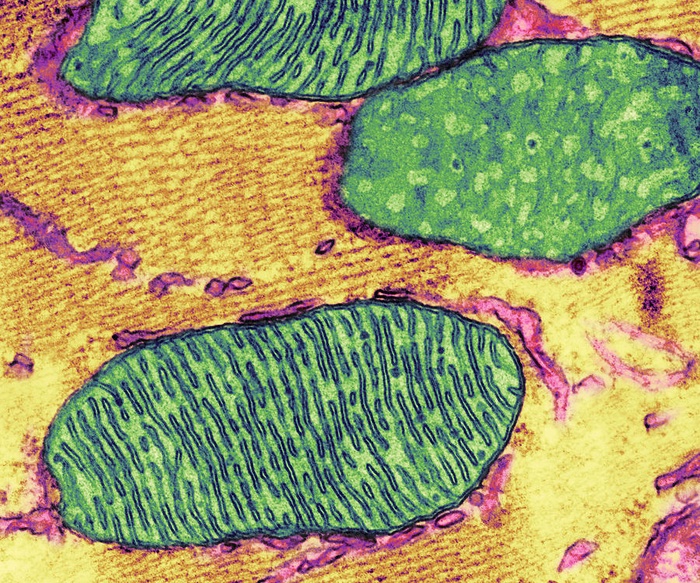Scientists at the University of California, San Diego (UCSD), School of Medicine and collaborators report they have uncovered the biochemical pathway that results in the generation of oxidized mitochondrial DNA (mtDNA). Their findings reveal how mitochondrial damage triggers the complex and destructive inflammatory response that follows.
“mtDNA escaping stressed mitochondria provokes inflammation via cGAS-STING pathway activation and, when oxidized (Ox-mtDNA), it binds cytosolic NLRP3, thereby triggering inflammasome activation,” wrote the researchers. “However, it is unknown how and in which form Ox-mtDNA exits stressed mitochondria in non-apoptotic macrophages. We found that diverse NLRP3 inflammasome activators rapidly stimulated uniporter-mediated calcium uptake to open mitochondrial permeability transition pores (mPTP) and trigger VDAC oligomerization.”
Their findings are published in the journal Immunity in a paper titled, “Oxidized DNA fragments exit mitochondria via mPTP- and VDAC-dependent channels to activate NLRP3 inflammasome and interferon signaling.”
In autoimmune conditions like lupus and rheumatoid arthritis, the amounts of circulating oxidized mtDNA correlate with disease severity, flare-ups, and how well patients respond to therapies.
“In addition to charting a new pathway responsible for the generation of inflammation-provoking fragments of oxidized mtDNA, this work opens the door to the development of new anti-inflammatory agents,” said senior study author Michael Karin, PhD, distinguished professor of pharmacology and pathology at UCSD School of Medicine.
“However this oxidized mtDNA is large and before it can sneak through the mitochondrial pores, it needs to be chopped into smaller fragments,” said Hongxu Xian, PhD, the study’s first author and a postdoctoral scholar in Karin’s lab. “That job is carried out by an enzyme called FEN1.”
Once chopped by FEN1, oxidized mtDNA fragments enter the cytosol where they can bind with two different sensors: NLRP3 and cGAS. NLRP3 is part of a multi-protein complex called the inflammasome that activates inflammatory responses. cGAS is an enzyme that generates a small molecule that acts as a chemical messenger to encourage production of other cytokines—proteins that stimulate, recruit, and proliferate immune cells.
Together, NLRP3 and cGAS spur inflammation, which in autoimmune diseases has characteristically run amok, prompting the immune system to attack and destroy healthy cells and tissues.
The new findings, said Xian, highlight the critical role of FEN1 in fueling the “auto-inflammatory fire.” Importantly, Xian and colleagues have demonstrated that FEN1 inhibitors block NLRP3 and cGAS signaling and thereby prevent the onset of the inflammatory process.
The findings are not only important because they can help explain the origin of common rheumatic diseases, but they can also lead to the development of new biomarkers and treatments for lupus and arthritis, explained the researchers.



